Hummus is a favourite with anyone looking for a healthy savoury snack to get them through the day. The dip, which is made using chickpeas, olive oil, sesame seed paste and lemon, is very nutritious with healthy fats, essential amino acids, vitamins and minerals.
Dieticians love it almost as much as foodies do.
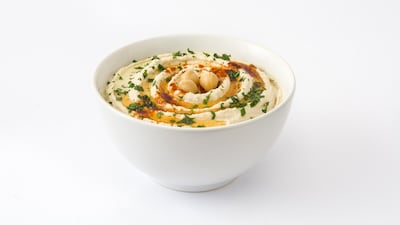
It’s easy enough to make at home, but why would you when it comes in handy little tubs from the supermarket. Before buying, however, it is well worth checking out the packaging which has some surprises.
Usually, when you read a food label, you can assume that if it says “reduced fat” on the front, it will have extra fillers such as sugar in the product. That has not been the case with hummus so far.
The plain, unflavoured low-fat versions from supermarkets, for example, often have extra chickpeas and less oil, making them healthier than the more expensive ones.
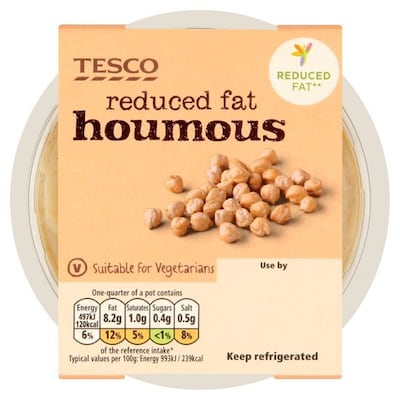
A 200g tub of Tesco’s standard own-brand hummus, for example, contains: chickpeas (43 per cent), rapeseed oil, water, tahini sesame seed paste, concentrated lemon juice, garlic and salt. (Tahini is just another name for sesame seed paste.)
The reduced fat version lists its ingredients as: chickpeas (59 per cent), water, tahini sesame seed paste, rapeseed oil, concentrated lemon juice, salt, cornflour and garlic. So that’s more than one-third more chickpeas in the low-fat version. Yes, it has added cornflour, which is a starch filler, but it is not the much-maligned modified corn starch.
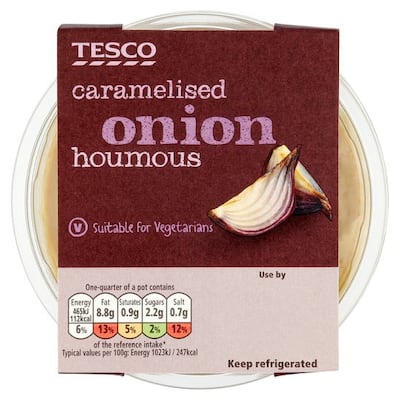
But that may be about to change. Poor crop yields have affected supply even as demand continues to increase over the past year. So prices have risen, but I would expect to see manufacturers trying to keep costs down by using more filler ingredients rather than extra chickpeas.
But there is no way of knowing without checking the ingredient list carefully and regularly.
Tesco’s Carmelised Onion hummus uses Muscovado sugar, an unrefined sugar that is marginally better than the white sugar the recipe used to include last year.
Tesco’s Moroccan hummus contains honey, as does Marks and Spencer’s Chunky Layered Moroccan Style Hummus. There’s no need to toss it back on the shelf and run screaming from the supermarket, however.
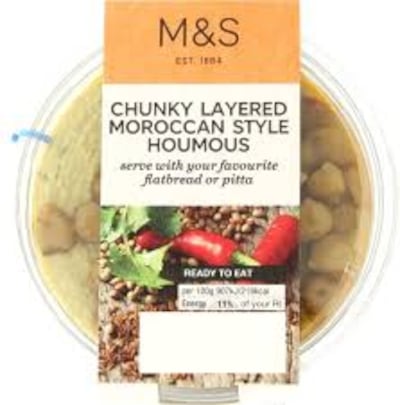
Just be aware that choosing the sweetened one is the difference between having a snack with almost no sugar (0.5 per cent), to one with almost two teaspoonsful, if you eat the whole pot.
Other flavoured dips such as the Thai Coconut Curry hummus from Healthy Horizons, even have added wheat into the mix.
This product, which is produced by Nature's Best in Co Louth, contains: chickpeas, coconut milk, tahini paste (sesame seed), rapeseed oil, lemon juice, water, curry powder (spices [cumin, chilli, coriander, ginger, turmeric], salt, wheat flour, garlic), red chilli, salt, lime juice, ginger puree, coriander, garlic puree, fermented sugar, turmeric, sugar, cumin powder.
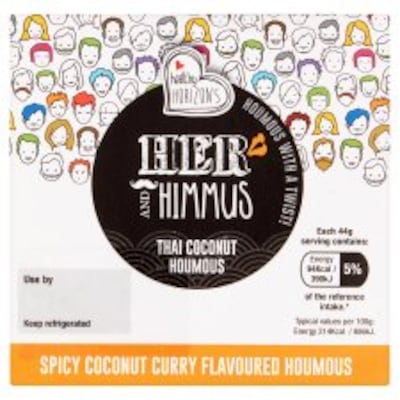
Sugar pops up twice here. The wheat is there because it is in the curry powder mix that Nature’s Best uses. That’s bad news for coeliacs and there really is no need for it.
Strangely, this product says on the front that each “44g serving” contains 94 calories or 390kilojoules. So a serving size is just about a quarter of one of those 175g tubs?
Perhaps if it is being taken as a snack only.
Ingredients change, so it is worth casting an eye over the labels. Two years ago, the high salt levels seen in some tubs of hummus was highlighted in a study that got much press coverage. Tesco’s Carmelised Onion, for example, had 1.6 per cent salt, which put it into the high-salt range. That has since been halved.
Given the issues extra salt causes, that seems like a good development.
Things can change, especially if manufacturers think we want them to.
FOOD LABELS SERIES
1) Being a successful shopper
2) Bread
3) Milk
4) Cereal
5) Rashers
6) Yoghurt
7) Soup
8) Hummus
9) Pasta sauce
10) Chinese ready meals
11) Frozen chips
12) Chilled fish














